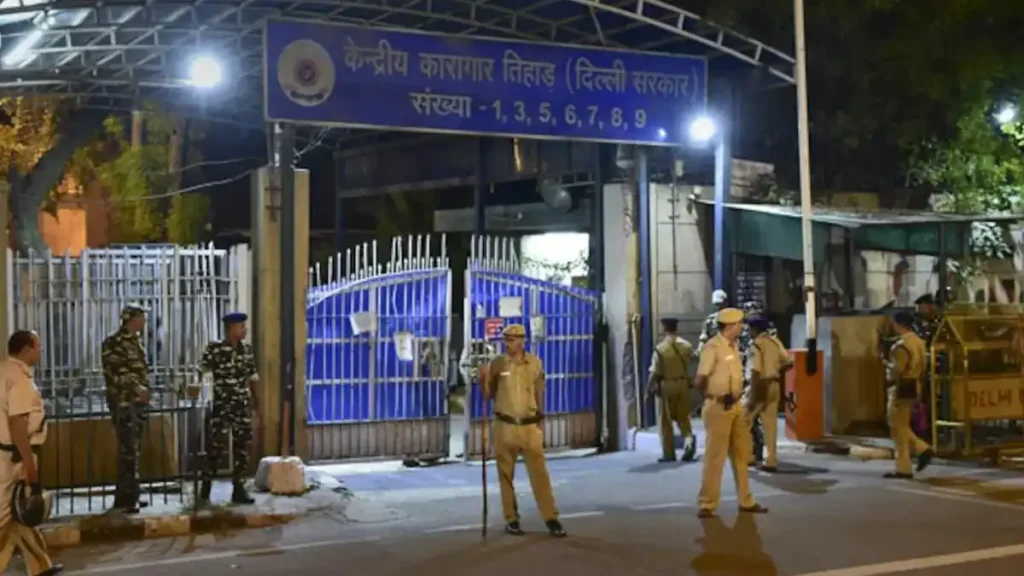Delhi Prisons Get Devices To Detect Hidden Mobiles And Metal Objects
In this digital age, where information is at our fingertips, the public’s curiosity spans far and wide, often leading them to explore various aspects of our society. One such topic that has piqued the interest of many is the Delhi jail. People, fueled by the vast expanse of the internet, are eager to delve into the intricacies of the Delhi prison system. They don’t just seek generic information; there’s an inherent desire to stay abreast of the latest updates regarding this facet of our society. In response to this collective inquisitiveness, we aim to cater to our readers by presenting a comprehensive article that sheds light on the Delhi jail, offering not only a broad overview but also delving into recent developments.

Delhi Prisons Get Devices To Detect Hidden Mobiles
Now, turning our attention to the specifics, an interesting revelation has come to the fore. Delhi Prisons have recently acquired ten non-linear junction detectors, a technological marvel designed to uncover hidden mobile phones and metal objects within the confines of the jail. This move comes in the wake of a tragic incident wherein a mobster met his demise inside Tihar jail, prompting the prison administration to take decisive action against potential hazards lurking within the wards.
The detectors, procured at a considerable cost of 1.5 crore from a reputable US-based company, represent a significant leap in the prison system’s technological capabilities. Sanjay Baniwal, the director general of Delhi Prisons, has officially confirmed this strategic acquisition. His statement underscores the administration’s commitment to enhancing the efficiency of correctional staff through the infusion of cutting-edge technology.
The motivation behind this acquisition is clear: the need to root out hidden contraband, particularly mobile phones and metal objects, surreptitiously stashed away by inmates. The non-linear junction detectors are touted as a game-changer, with the ability to identify these items even if embedded up to two feet into concrete or the ground. Such a capability is crucial in maintaining the safety and order within the prison premises.
The implementation of this technology is not arbitrary; it stems from a thorough evaluation. In 2021, the prison administration initiated the procurement process with an initial order for two non-linear junction detectors. After rigorous testing and favorable results, a decision was made to scale up and acquire additional devices from the same US-based company. The detectors, with a multifaceted capacity to detect metals, SIM cards, and mobile phones, can penetrate concrete and ground surfaces, offering a comprehensive solution to the challenge of concealed contraband.
Each of these advanced devices comes at a cost of 15 lakh, reflecting the substantial financial commitment made by the prison authorities to fortify their security infrastructure. The combined capacity of Delhi’s three major jails—Tihar, Mandoli, and Rohini—is a staggering 10,026 inmates. However, the current reality paints a different picture, with 2,165 offenders and a significant 17,906 undertrial prisoners incarcerated in these facilities.
The implications of this technological upgrade are far-reaching. The detectors not only serve as a deterrent to illicit activities within the prison but also act as a proactive measure to prevent untoward incidents. The recent tragedy that unfolded within Tihar jail serves as a stark reminder of the potential risks that lurk in such environments.
As we continue to unfold the layers of information surrounding Delhi’s prison system, it becomes evident that the authorities are not merely reactive but are actively employing technology to stay ahead of potential challenges. The foresight in investing in state-of-the-art equipment not only showcases a commitment to the safety and security of inmates and staff but also serves as a testament to the evolving landscape of prison management in the 21st century.
In conclusion, this article endeavors to satiate the public’s thirst for knowledge about Delhi jail. Beyond being a mere repository of facts, it aims to provide a nuanced understanding of the recent developments, particularly the integration of advanced technology to fortify security measures. As we navigate the complex web of information, one thing remains clear—the Delhi prison system is adapting, evolving, and leveraging technology to ensure a safer and more secure environment for all stakeholders involved. Stay tuned for more updates as we continue to explore the dynamic landscape of Delhi’s correctional facilities.
Delving into the intricate details of the Delhi jail system has become a common pursuit for the curious minds navigating the vast realm of the internet. As the public fervently seeks information about Delhi jails, their curiosity extends beyond mere curiosity; they yearn for the most recent updates and developments within the confines of these correctional institutions. In response to this growing interest, we embark on a journey to unravel the nuances of Delhi jails, offering a comprehensive narrative that caters to the inquisitive reader’s thirst for knowledge.
The crux of our discourse revolves around a recent development within Delhi Prisons— the acquisition of ten non-linear junction detectors designed to unearth hidden mobile phones and metal objects concealed within the labyrinthine walls of the correctional facilities. This cutting-edge technology, with its ability to penetrate concrete and soil up to two feet deep, emerges as a formidable tool in the arsenal of Delhi Prisons.
The genesis of this technological upgrade finds its roots in a tragic incident, the demise of a mobster within the confines of Tihar jail. Faced with the grim reality of hazardous items lurking within the wards, the prison administration felt compelled to take decisive action. The procurement of these non-linear junction detectors, at a substantial cost of 1.5 crore, unfolded as a proactive response to the pressing need for enhanced security measures.
Sanjay Baniwal, the Director General of Delhi Prisons, validated this significant development, emphasizing the commitment to equipping correctional staff with state-of-the-art technology. The detectors, as he highlighted, empower the staff to uncover hidden mobile phones, a prevalent contraband within the jail walls. Baniwal underscored the versatility of the detectors, not only in ferreting out mobile phones but also in identifying concealed metal objects.
A senior jail official shed light on the origins of this technological integration, revealing that in 2021, the department initiated the process by procuring two non-linear junction detectors for experimental use. The positive outcomes of these trials paved the way for a more extensive acquisition, prompting the purchase of ten additional devices from a reputable US-based company. The detectors, with their capacity to discern metals, SIM cards, and mobile phones buried beneath two feet of concrete, emerged as a beacon of progress in the realm of prison security.
The financial commitment of 1.5 crore for these ten devices, each valued at 15 lakh, reflects the gravity of the administration’s dedication to fortifying the security apparatus within the prison system. As we delve into the technical intricacies of these detectors, it becomes apparent that their capabilities extend beyond mere surface scrutiny. The ability to uncover objects buried beneath the ground or concrete, up to two feet deep, unveils a new dimension of security measures.
The broader context of this development encompasses the vast expanse of Delhi’s correctional landscape, encompassing three major jails—Tihar, Mandoli, and Rohini. The combined capacity of these facilities stands at 10,026 inmates, yet the reality on the ground reveals a different picture. With 2,165 offenders and a staggering 17,906 undertrial prisoners (UTP) currently incarcerated, the challenges facing the correctional system are both complex and multifaceted.
As we navigate through the labyrinth of information surrounding Delhi jails, this narrative serves as a conduit for the latest updates and news emanating from the heart of these correctional institutions. Stay tuned as we unravel the layers of Delhi’s prison system, offering insights into its challenges, innovations, and the tireless efforts to uphold security and justice within its walls.







